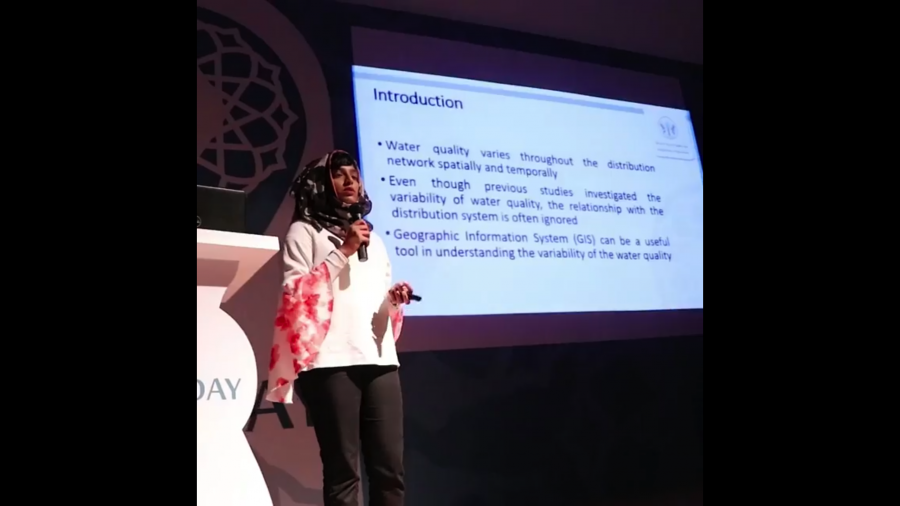- About
- Admissions
- Study at AUS
- Prospective Students
- Bachelor's Degrees
- Master's Degrees
- Doctoral Degrees
- Admission Publications
- International Students
- Contact Admissions
- Grants and Scholarships
- Sponsorship Liaison Services
- Testing Center
- New Student Guide
- File Completion
- New Student Orientation
- Payment Guide
- Executive Education
- Students with Disabilities
- Academics
- Life at AUS
- Research
- Contact Us
- Apply Now
- .

AUS team is runners-up in SEWA GIS competition
A study on the variability of water quality in the emirate of Sharjah was conducted as part of the second Sharjah Electricity and Water Authority (SEWA) Geographic Information Systems (GIS) 2018 competition held recently. An American University of Sharjah (AUS) team won second place amid 12 government agencies, three universities, regional and international companies, and the IT Department at SEWA. The competition involved real-world projects that utilize Geographic Information Systems.
Dr. Tarig Ali, Associate Professor of Civil Engineering and Interim Director, Geospatial Analysis Center (GAC), and his team were declared runners-up in the university research project category with their project entitled “GIS-based Study on the Variability of Water Quality in a Water Distribution Network.”
The AUS team also included Dr. Maruf Mortula, Professor of Civil Engineering; Dr. Kazi Fattah, Associate Professor of Civil Engineering; and Master of Science student, Huda Aslam.
The objective of the team’s project was to assess the variability of the water quality in the Sharjah water distribution network. Water quality monitoring data was collected from 46 locations throughout SEWA’s water distribution network and several water quality parameters were monitored including residual chlorine, iron and fluoride. The GIS-based study was conducted in order to understand the temporal and spatial variability of water quality parameters throughout the distribution network.
Speaking about their findings, Dr. Ali said:
“Temporal variations indicated similar water quality characteristics throughout the three-year period (2012-2014) while spatial variability indicated that the older part of the city is susceptible to water quality degradation more than the newer areas. Although the measured water quality parameters didn’t exceed the limits set by World Health Organization (WHO), and the government, vulnerable sections of the network can be maintained with priority to ensure a sustainable water distribution network.”
The winners were awarded a certificate and cash prizes.

